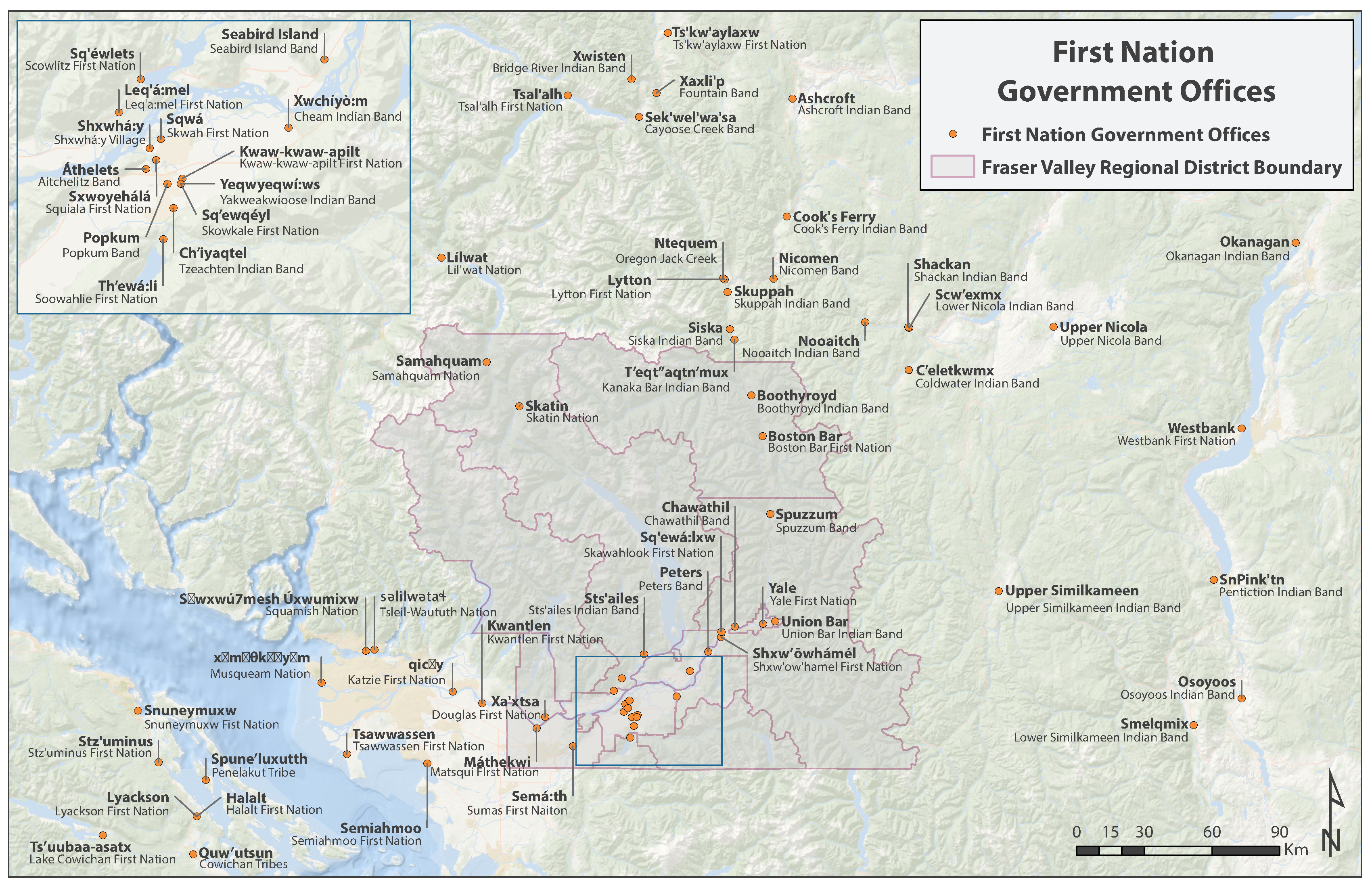Indigenous Relations
The lands and waters within the area we identify as the Fraser Valley Regional District have been home to Indigenous Peoples since time immemorial. The Nlaka'pamux, St'at'imc, Stó:lō, and Sts’ailes Peoples, each with their own distinct history, traditions, and culture, have inherent rights and title to this land, as affirmed by Section 35 of the Constitution Act.
We are dedicated to actively listening, learning and collaborating on opportunities to build a strong and resilient region that benefits everyone. Our commitment to this is reinforced by the adoption of the 2023-2026 Strategic Plan. This plan outlines the steps the FVRD will take to establish partnerships with the Nlaka'pamux, St'at'imc, Stó:lō and Sts’ailes Peoples that are rooted in trust, respect, and openness in the spirit of reconciliation.
The FVRD’s jurisdictional boundaries exist within an intricate and overlapping network of territorial boundaries, interest areas, reserve lands, and administrative precincts. The creation of “Bands” through the Indian Act and the attempted dissolution of traditional governance structures in favour of Western systems has resulted in a complex network of Nations, Tribes, service agencies, treaty associations, reserves, regional districts, municipalities, and communities[1].
The map below does not demonstrate the full complexity of the region, it only illustrates the location of the government offices for the Nations that have indicated that they have interest areas that overlap with the boundaries of the Fraser Valley Regional District.

Source: Consultative Areas Database (CAD)
_____________________
[1] Through the Indian Act the some 60 to 80 Nations or Tribes were divided into 633 small federal administrative enclaves called “bands” on some 3,000 reserves (Source: https://www.canada.ca/en/department-justice/news/2017/07/realizing_a_nation-to-nationrelationshipwiththeindigenouspeoples.html)
More Information
To learn more about the work that the FVRD is doing to build relationships and work collaboratively with all communities in this shared landspace, please visit HaveYourSay.FVRD.ca/Indigenous-Relations or email indigenousrelations@fvrd.ca.

